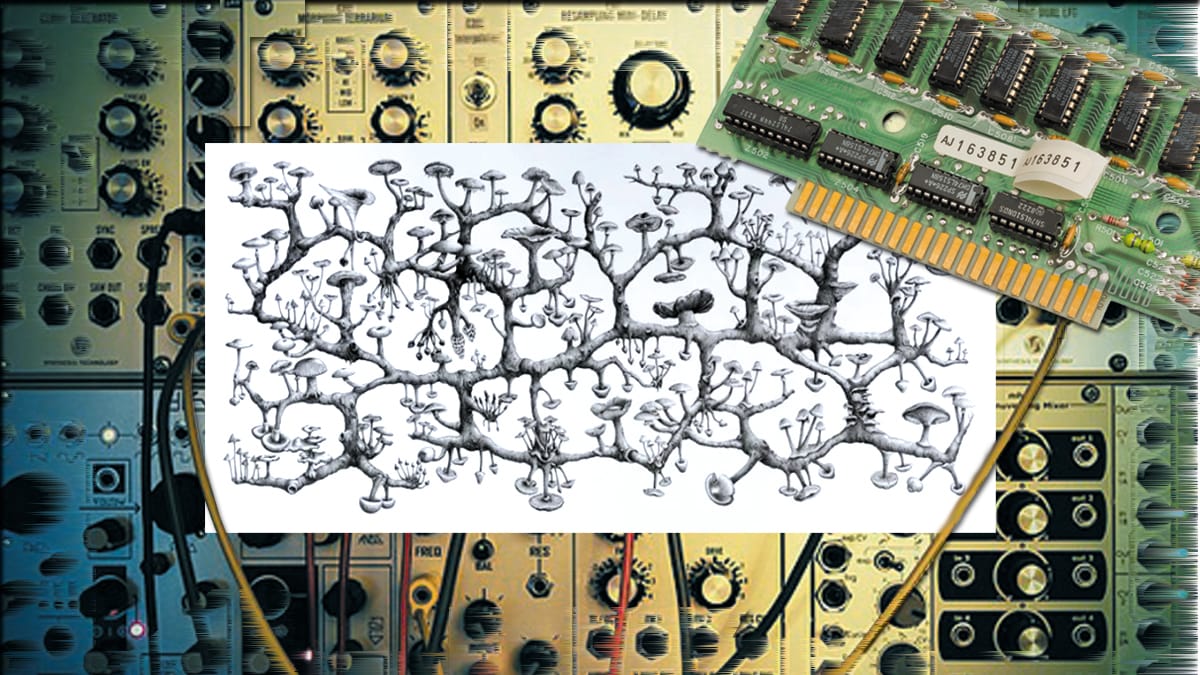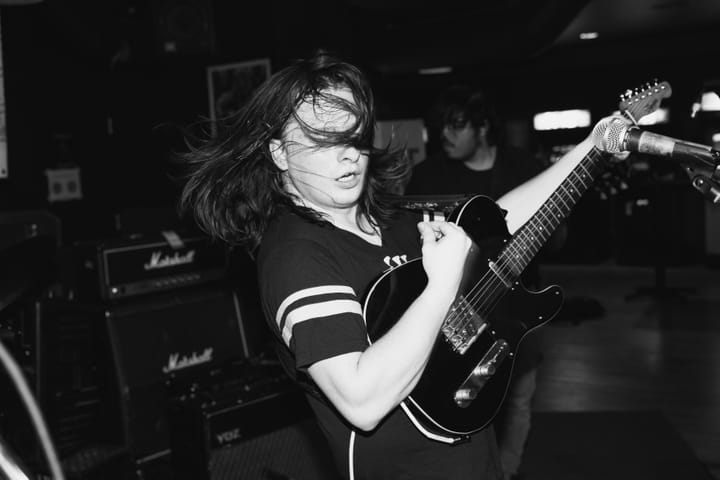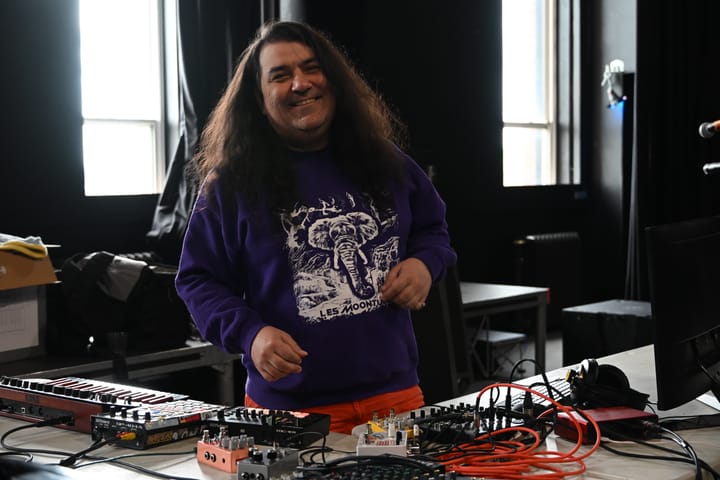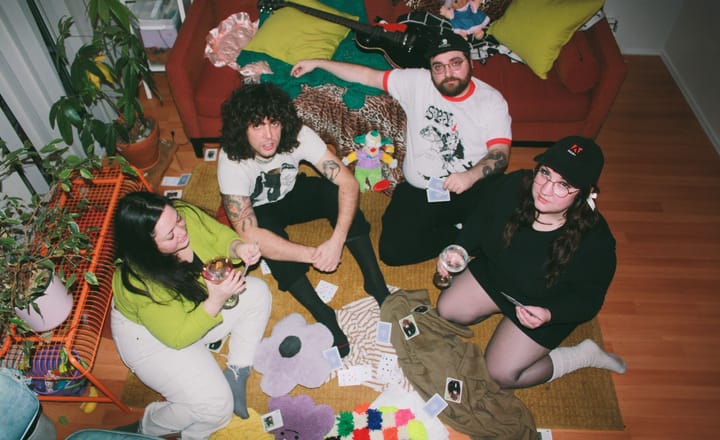
Beyond Random Access: Grassroots Music Organizations on the Benefits of Decentralizing Institutional Memory
In 2019, Halifax’s OBEY Convention was at a crossroads. Three years after taking the reins from fest founder Darcy Spidle, co-directors Andrew Patterson and Kat Shubaly were served a cease and desist order from a law firm representing popular street artist Shepard Fairey, creator of the “Obey Giant” campaign. Challenging the festival’s use of OBEY in its name, the order arrived just months out from OBEY Convention’s 12th annual edition, posing an existential threat to the festival’s legacy and jeopardizing brand recognition while threatening to wipe out operational resources in the process.
Like many incoming administrators inheriting a festival that had outgrown its shaggy origins, Patterson and Shubaly were simultaneously piecing together OBEY’s institutional memory — a perennial challenge in the music labour sphere. Seismic shifts can occur as living legacies and resources change hands over extended periods of time, and with a lot of passion and ideas in the mix (not to mention the loyalty of pre-existing audiences as well as time-sensitive grant funding ), there’s plenty to get lost in the cracks. With the threat of the cease and desist looming over their heads, they realized looking back was as important to formalizing the organization as looking forward was.
Founded in 2007, OBEY Convention had spent its early years as a relatively grassroots undertaking and an outgrowth of Spidle’s label, Divorce Records. Initially centring around punk, noise, and power violence programming, it quickly expanded in scale and scope, adding venues and shows each year and eventually including film screenings, sound installations, a talk and workshop series called the Everyseeker Symposium, and communal drone jams in honour of Weird Canada’s Drone Day.
The solitary braintrust for the festival since 2007, especially preceding OBEY’s incorporation as a non-profit and the formation of a board of directors, like many underground undertakings that take on lives of their own, somewhere in there the operations got away from Spidle. So when Patterson and Shubaly became co-directors, they began the arduous process of piecing together a Google Drive and an account of the festival’s institutional memory from secondhand pieces of information and scattered notes.
“It was really kind of a scorched earth scenario. Handwritten binders and scattered papers printed off in multiple locations,” Patterson says. “Kat and I were always trying to dig information out of Darcy’s brain.”
At the same time, Patterson and Shubaly were realizing that although the board that had been assembled as a condition of OBEY’s incorporation was made up of qualified individuals, their individual roles within the organization were relatively symbolic. To help in creating a more practical memory bank, they set to work establishing a working board.
“It was a bit of a delicate game of trying to appreciate all of the people who had been around forever, but also if they weren’t doing real work, gently telling them to get out of the way so we could bring in people who were more experienced and more willing to dedicate hours,” Patterson explains. “If [the cease and desist] had happened like a year prior, the festival would have completely fallen apart.”
It was a positive turning point. Conversations started happening around opening up the organization to community consultation, holding public AGMs, assembling documentation, and generating overall transparency — “really trying to turn the organization from this passion project of one person into a community-oriented, informationally accessible thing that was spending taxpayers’ money,” Patterson says. “No one ever had the chance to show up to a meeting and provide feedback to OBEY Convention until that point.”
After mounting the final edition of OBEY Convention in June 2019, the festival relaunched under the EVERYSEEKER banner, with a substantial portion of a $10,000 emergency fund from Arts Nova Scotia dedicated towards a community consultation process. After hosting the initial edition under the new name virtually with the COVID-19 pandemic in 2020, they’ve continued to return to downtown Halifax every year since.
Respectively executive and artistic directors at Toronto creative music centre the Music Gallery, Matthew Fava and Sanjeet Takhar say the struggles Patterson and Shubaly encountered in their early years with OBEY can sometimes be typical of experiences with institutions that develop out of passion projects.
“There can be a kind of glacial pace of self-reflection or no self-reflection, no willingness to be responsive to one’s community,” Fava comments, “it can be a by-product of artistic directors or founders being stuck in their roles and board members insulating those founders, or themselves being stuck in a role.”
False memories or misplaced nostalgia for a perception of what an institution once stood for at a given time can also detrimentally affect an institution’s future plasticity.
“Success leads to ego, leads to pride, which leads to not wanting to change,” Takhar adds.
Inspired by the artist-run-centre movement that developed out of the 1960s, the Music Gallery was founded in 1976 by members of legacy free improvisation group the CCMC, and has operated out of various locations throughout downtown Toronto over the course of its lifespan, witnessing decades of change in the city and the country’s attitudes toward creative music, also receiving decades of support from public granting bodies.
Key to institutional longevity even outside of crisis management, clear, accessible succession stewardship and practical, carefully tended organizational systems can be instrumental in passing on institutional memory between outgoing and incoming staff. As a legacy arts institution that continues to bring in new audiences year over year, and under one vision of artistic direction to the next, the Music Gallery occupies a unique position most newer arts organizations may only ever dream of achieving. In addition to venue space it can call a home, a physical archive housed at York University contains “an abundance” of recordings of past concerts and the organization’s administrative files from the 70s, 80s, and 90s.
Perhaps even more importantly, Fava says the Music Gallery’s standing as a “community organization” has allowed it to retain ongoing connections to its living memory — in its immediate orbit, former executive director Monica Pearce remains on the board, lighting designer Sandor Ajzenstat has been with the Music Gallery since 1980, and technical director Paul Hodge has been with the organization since 1978, and its roots keep growing.
“If there’s something about the last five, 10 years that I might not have a grip on, we can inquire and get some perspective on that,” Fava says. And when Takhar entered her role at the Music Gallery, previous artistic director David Dacks remained available both in an advisory capacity and as a colleague, stepping into an executive director role before Fava. She says Dacks even compiled an entire artistic director guidebook for her before departing the organization altogether.
“It’s like 30 or 40 pages that I can reference whenever I have a question about anything,” says Takhar. “I would iterate on that if I were to transition out and provide any updates to the next artistic director.”
Reflecting on the general lack of resources afforded to organizations in the arts, Sappyfest creative director Andrea Vincent, who also co-founded St. John’s festival Lawnya Vawnya and served as an executive director for Dawson City Music Festival between, calls situations like the Music Gallery’s “an absolute dream.”
“I know very few organizations that have the time and resources to dedicate to smooth transitions and great documentation.”
At the same time, she does credit the guidance of her Sappyfest predecessors Steve Lambke and Paul Henderson, who founded the festival in 2006 with John Claytor and Julie Doiron, for providing invaluable support that enabled her to navigate the position while honouring the festival’s legacy and vision.
“Anything I needed, they were there to support me or give me historical information, bounce ideas off.”
Vincent also praises the Sappyfest board’s role in assembling the organization’s financial information on QuickBooks.
“It’s really boring, but it is beyond helpful for administrative institutional memory.”
While software and organizational tools can offer institutions a birds-eye-view of the past, present, and possible futures before them, Fava cautions against relying on them at the cost of community and active dialogue.
“Even in the absence of having some kind of encyclopedic exhaustive collection of those networks, we’re still embedded in a lot of those networks and those networks are revealed to us in stages as we work with the organization and invite people in and then they share some story with us,” Fava says. “There might be tethers that go back decades that we totally don’t even know about.”
In lieu of any formally institutional archiving, Sappyfest has generated a number of projects that earnestly document the festival throughout its history. In 2014 former creative director Paul Henderson published a collection of photos and musings commemorating the first eight years of the festival under the title SappyForever, The Sappy Post, a zine that pops up throughout the festival was anthologized with a book sharing the same name in 2021, and Toronto-based photographer Stephen McGill recently produced a photography zine called Looks Like We Made It documenting festival events from 2012 to 2020.
On a similar tip, Vincent dispels the notion that any one organization is fundamentally acting in parallel to others, underlining the support of peers across the country. “It’s such a blessing to have such a supportive community all across the country willing to share information and resources.”
As the Music Gallery approaches its 50th anniversary in 2026, Fava and Takhar say they’re prepared to immerse themselves deep in the organization’s archives, as well as to reopen findings from community consultations dating back decades, and to conduct further outreach of their own.
“We want to make sure that we are actually aware of, engaging, and open to the critiques, the observations, the concerns, the feelings of our staff members, our coworkers, our colleagues,” Fava says.
“There isn’t a lot of pride about keeping things the way they have been,” says Takhar. “If we’re an experimental music venue and we believe in creativity and moving with our hearts and our guts in mind, then we should be doing that as an organization as well.”
Full Disclosure: New Feeling founding member Laura Stanley is on the Music Gallery's Board of Directors. Laura is not a part of New Feeling's editorial working group and had no involvement or influence in the making of this story.
Read more

Sentries: Multifaceted Noise Rock

Step Into Little Stone Crow's World

